Let’s start with a word of warning. This can be considered as a long article. To help you out, I divided the article into two parts. The first part contains my personal journey in becoming a Scrum Master, the second part includes recommendations for new Scrum Masters. Both parts can be read as separate articles. Don’t worry, I’m not going to track the readers that immediately scroll down to the section with recommendations…
Part 1 — Becoming a Scrum Master
Nine years ago I changed my title from Project Manager into Scrum Master. Although at that moment, I hardly understood what the role was about. After doing online research, it just seemed to make sense. In the meantime, a lot has happened! Nowadays I frequently receive the question:
“Hi Barry, I’m currently a Project Manager (or any other role) and I would like to become a Scrum Master as well, where do I start? Do you have any recommendations for my Scrum Master journey?”
So far, I’ve always answered these questions individually. I consider it part of my role to support everyone’s Scrum Master journey whenever I can. However, when I continuously need to write the same answer, it’s easier to turn it into a blog post. Therefore, this part of the article describes my journey becoming a Scrum Master. Primarily with the purpose of offering inspiration to new Scrum Masters or fresh ideas for Scrum Masters that want to give their journey a boost.
My dream of becoming a Project Manager
I started working in the Telecom sector around 1999 as an IT Application Manager. As an Application Manager, I was responsible for managing a wide variety of applications (duh…). Always eager to learn more, I registered for a certification program by which I could learn BiSL, ASL, ITIL, and PRINCE2. The ultimate corporate Application & Process Management path, or so I thought.
Early on, I discovered that Project Managers were the hotshots in an organization. They seemed to be involved in everything! Negotiating with suppliers, managing expectations of stakeholders, checking the progress with the developers, dealing with management. It seemed awesome!
However, I did notice that all of them seemed to be stressed continuously…
While managing applications, I simultaneously started to read multiple books about project management. In the picture below, you can even spot a book about Project Management for Dummies :)

Early 2000, the desk where it all started :)
Whenever there was an opportunity to do a project, I would immediately offer myself as a volunteer. Due to my persistent enthusiasm, I was allowed to become the sidekick of a “real” Project Manager. My role as a junior Project Manager was simple to explain:
“Ensure the Gantt charts reflect reality.”
This easily became a fulltime job. In the beginning, I considered my lack of skills with Microsft Project was the problem. But after getting certified in creating Gantt charts as well, I slowly started to understand that the ever-changing reality was the problem. If only we would create more accurate estimates…
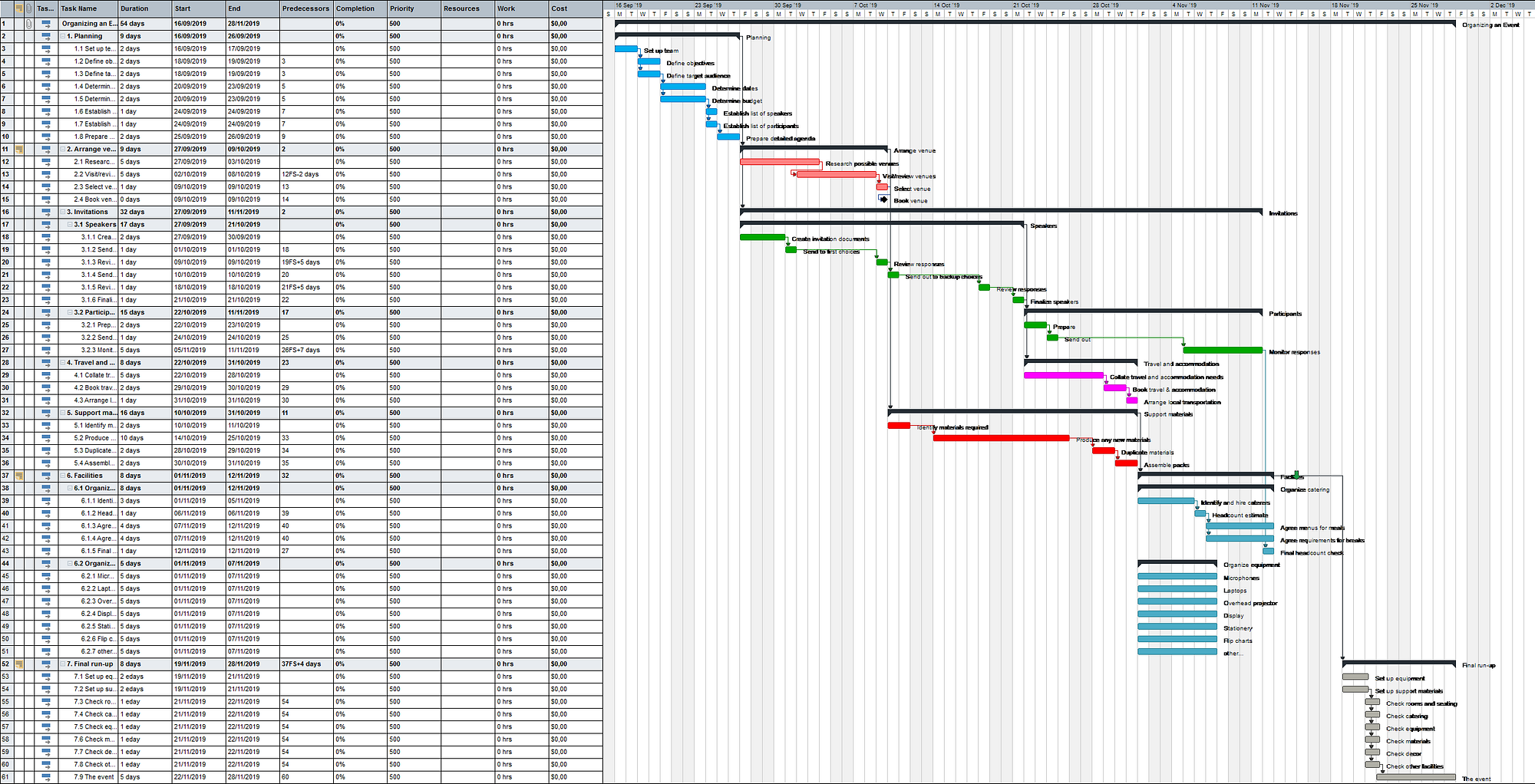
A Gantt-chart, no need to read the details…
Strangely enough, this dreadful experience with Gantt-charts highly motivated me to become a Project Manager. Updating Gantt-charts would become something I could delegate to my future assistant. This would allow me to do some “real” project management activities!
Long story short: I experimented with different roles & organizations and decided to educate myself as a Project Manager by getting a degree in Business Administration, specialized in managing projects. After 4 years of hard work in the evenings and weekends, I finally was ready for my first real job as a Project Manager.
The only thing left to do was finding a company crazy enough to hire me…
Hello Enrise!
Upon today, I still don’t understand why Enrise — a web agency — offered me my first job as a Project Manager. Somehow I probably showed a glimpse of potential… Nevertheless, I was extremely proud! After years of hard work and long evenings of studying, I finally had become a Project Manager!
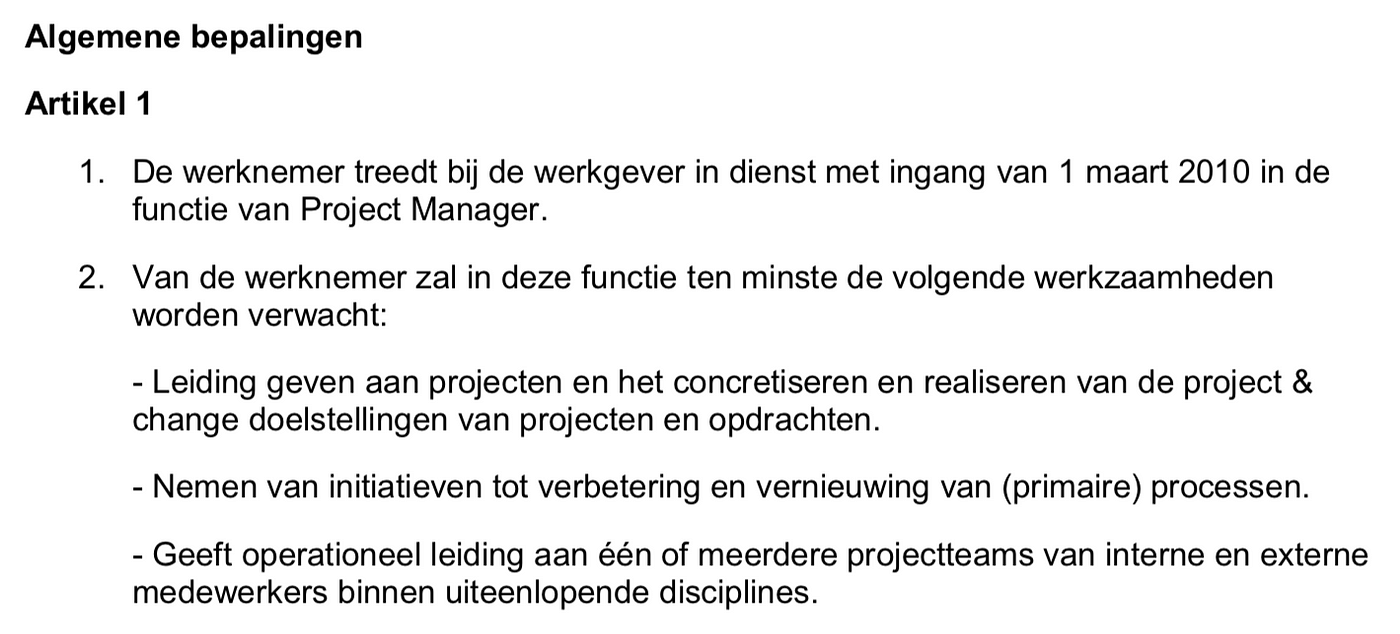
My first (Dutch) contract as a Project Manager — a dream come true!
Unfortunately, it turned out to be a nightmare. Enrise was an awesome company with amazing colleagues. But after one year I noticed a clear pattern: everyone was unhappy! Developers, because of the growing crunch-culture. Management, because most projects were not profitable. Customers, because they didn’t get their product on time. Salespeople, because what they promised to the customers proved to be not feasible. More importantly: as the Project Manager, I seemed unable to solve all these problems.
After being a Project Manager for one year I almost burned out. I couldn’t stand the shit-storms anymore. I got so tired of updating status-reports andtask-tracking tools, that I started looking for different ways of managing projects.
“Wasn’t there a different way of developing, delivering, and sustaining complex products?”
I found my answer in a book by Rini van Solingen. On a cold and dark winter-evening (I can’t remember these details but it sounds cool), I read Rini’s book “The Power of Scrum”. The story he shared was amazing. This Scrum-thing seemed exactly the alternative I was searching for! After weeks of studying books, articles, and videos about Scrum, I made a decision:
“I’m going to be a Scrum Master and start my own Scrum Team!”
Again, long story short, I started considering myself a Scrum Master. Slowly, others accepted this as well. Although hardly anyone, including myself, understood what Scrum was about. I found a couple of volunteers that liked the experiment of forming a Scrum Team, and years of (many) failures & (some) successes followed. Most importantly, the number of successes started to exceed the failures. I became part of a team with whom I still catch-up on a regular basis.
During that period, writing became an important activity. I started to write down everything I learned. In hindsight, I already started writing the paper “The 8 Stances of a Scrum Master” around 2011–2014, although it was published via Scrum.org years later.
How I started as a Scrum Master…
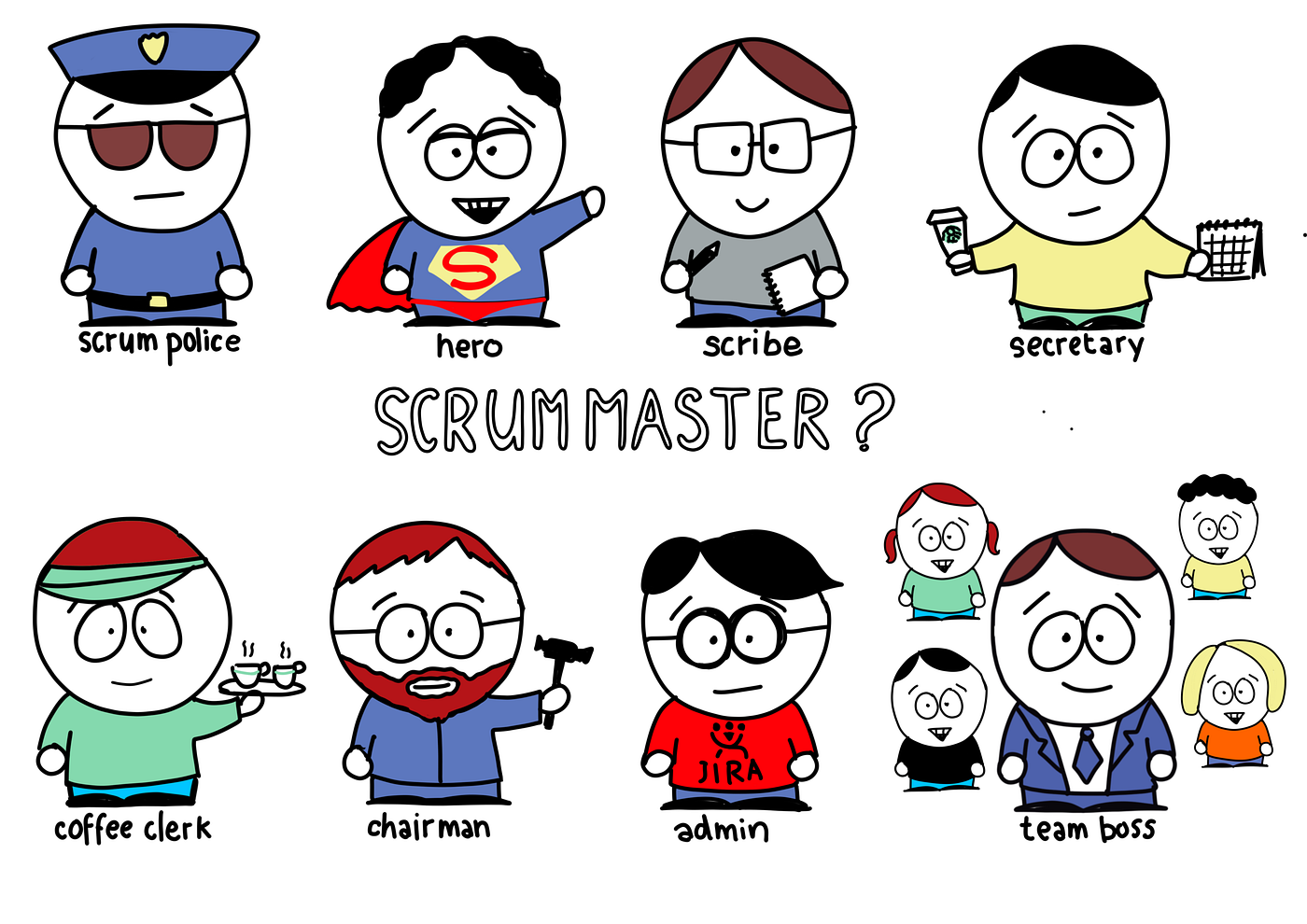
The 8 Misunderstood Stances of a Scrum Master
How I eventually became more successful as a Scrum Master…

The 8 Preferred Stances of a Scrum Master
Prowareness
During my time at Enrise, I stayed in touch with Rini van Solingen. Rini worked at Prowareness and by attending their monthly meetups I became familiar with this Agile consultancy agency in the Netherlands & India. After 5 years at Enrise and almost 4 years as a Scrum Master, it felt like the right moment for the next step.
Speaking of leaving your comfort zone! The culture couldn’t have been more different. Enrise as the “classic” backend development organization proved to be a perfect match with my introvert character. Prowareness is the opposite. After 6 months I was ready to tear my contract apart, but I was encouraged to give it another try.
In an environment of seemingly endless opportunities (Prowareness), the pitfall is you end up being very busy, but you don’t achieve anything. I decided to fully focus on fulfilling the role of Scrum Master for different organizations. This focus proved to be a good choice. My core specialization became the thing I loved most: Scrum Master(y).
After a difficult start, my time at Prowareness became an awesome rollercoaster. I continued my habit of writing blog posts about my experiences. At that moment, I discovered that my English writing (and speaking) skills weren’t very good. Therefore I decided to start writing all my blog posts in English. Argh, writing an article took so much longer! To challenge myself even further, I signed up for doing a presentation at Scrum Day London. I had never done a presentation at a seminar before, not even in Dutch and in The Netherlands! So yes, I had many sleepless nights!
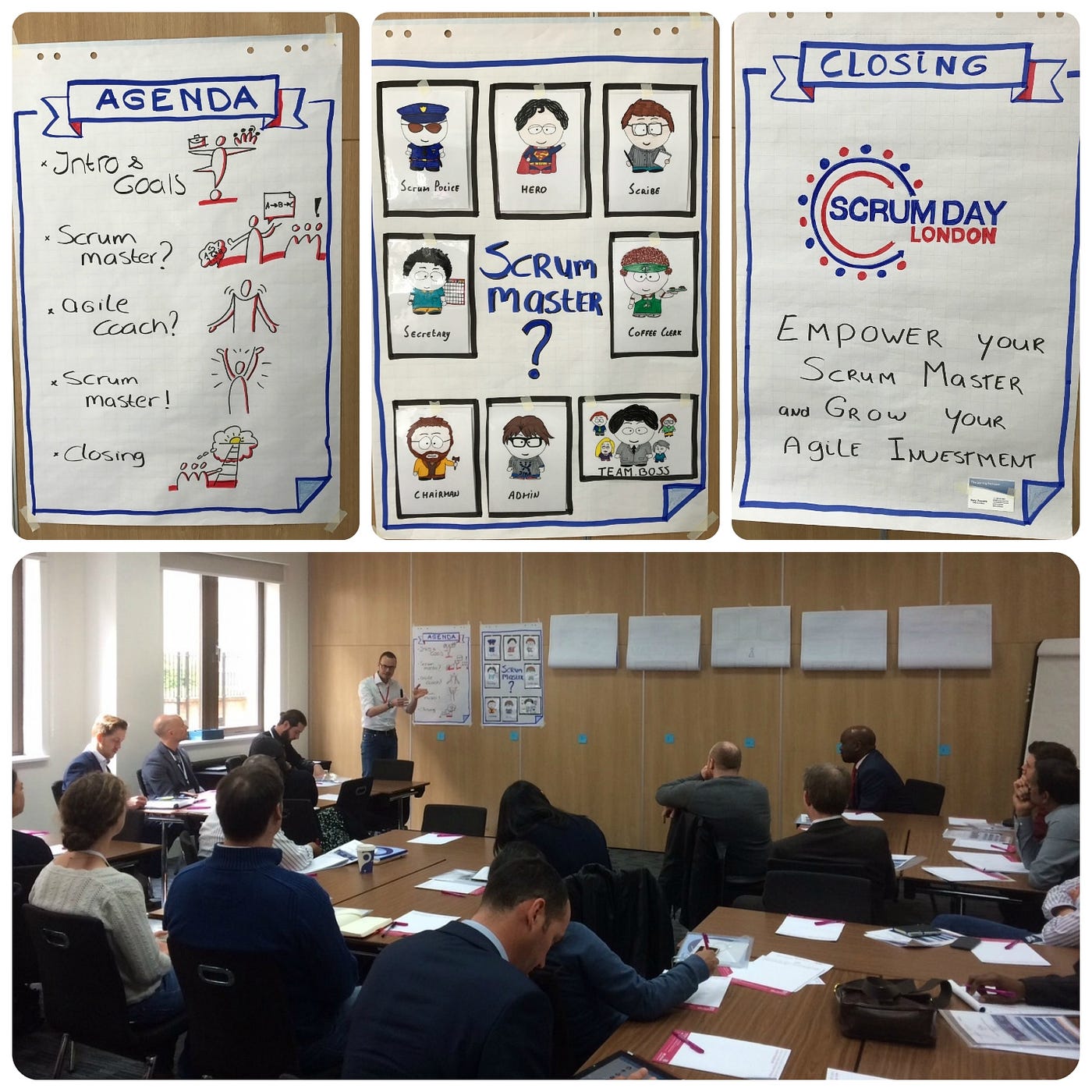
Scrum Day London, the first public presentation I’ve done in English
Again, long story short… Scrum Day London was a success (something I like to think) and many other seminars would follow. At Prowareness I ended up doing lots of great Scrum Master assignments. I worked for some very interesting organizations and was part of great Scrum Teams. After a while, something strange happened… Somehow people started to call me an “Agile Coach”, it even became my official title at Prowareness. For many people, this made sense. It was considered a logical next step after having been a Scrum Master for years. Also, my salary increased because of this ‘promotion’.
Unfortunately, I didn’t enjoy being an Agile Coach. I wasn’t able to have an impact on organizations I used to have as a Scrum Master. I felt lost in a ‘grey’ area organizations. Not being part of anything. Not really understanding what was going on, while being responsible for a large Agile transformation simultaneously. A recipe for disaster…
Although real disasters didn’t occur, I wasn’t very successful either. In retrospect, I was fulfilling a role others had in mind for me — being an Agile Coach -, instead of what I really wanted to do myself: being a Scrum Master. If you’re interested in learning my thoughts about this period, check the article “From 50% Agile Coach to 100% Scrum Master”.
Eventually, I became a Scrum Master again and decided it was the perfect opportunity to set the goal of becoming a Scrum.org Professional Scrum Trainer as well.
“I was fulfilling a role others had in mind for me — being an Agile Coach -, instead of what I really wanted to do myself: being a Scrum Master.”
Becoming a Professional Scrum Trainer
A characteristic of big, audacious goals is that they seem impossible to achieve. Although I really wanted to become a Scrum trainer, joining the Scrum.org community was even more important. So many people I highly respected were PSTs. It felt unreal to become a peer and have the opportunity to closely collaborate with them. I decided not to worry too much about this and to just enjoy the journey, learn as much as possible and hopefully, in the end, become a trainer.
In total, becoming a PST took me roughly two years. It started by setting the goal, it ended with the first-ever F2F peer review at Scrum Day Europe. Given that it involved beers as well, you could consider it a “beer” review 🙂.

Meeting Ken Schwaber, someone I highly respect for his contribution to Scrum
Scrum Master & Trainer
Being a Professional Scrum Trainer, I continued being a Scrum Master for several organizations but started to combine it with providing Professional Scrum Master training. This proved to be a powerful combination because I could include “fresh” Scrum Master experiences in my classes. Also, I learned that explaining a topic is the best way to discover if you truly understand it. Turned out I had a lot to learn…
Becoming self-employed
A nice characteristic of Prowareness is that they appreciate entrepreneurship. In a way, they succeeded, because after 2,5 years I decided to start my own company. I wanted to focus on being a Scrum Master & Professional Scrum Trainer. Having my own company, provided me with the desired focus.
Being self-employed, I continued fulfilling the role of a Scrum Master. Sometimes successful and sometimes it felt like a failure. But overall, I enjoyed it a lot! I did notice the increasing number of requests from former students of my PSM class. They all had the same question:
“Now that I’ve gained experience as a Scrum Master, what advanced class can you recommend?”
Trainer & Steward
Answering this question basically kickstarted the company I founded together with Christiaan Verwijs: The Liberators. Although there were many “advanced” classes for Scrum Masters available, all of them focused mostly on “best practices”. How to facilitate Scrum events? How to use Story Points? We wanted a class that focused on the desired mindset and behavior of the Scrum Master.
Fast-forward → August 2018 Scrum.org launched the PSM II class and by designing the class we also became the stewards. As stewards, we are responsible for the entire Professional Scrum Master curriculum (both PSM-I and PSM-II). This is something we do together with Stephanie Ockermanand Pawel Mysliwiec.
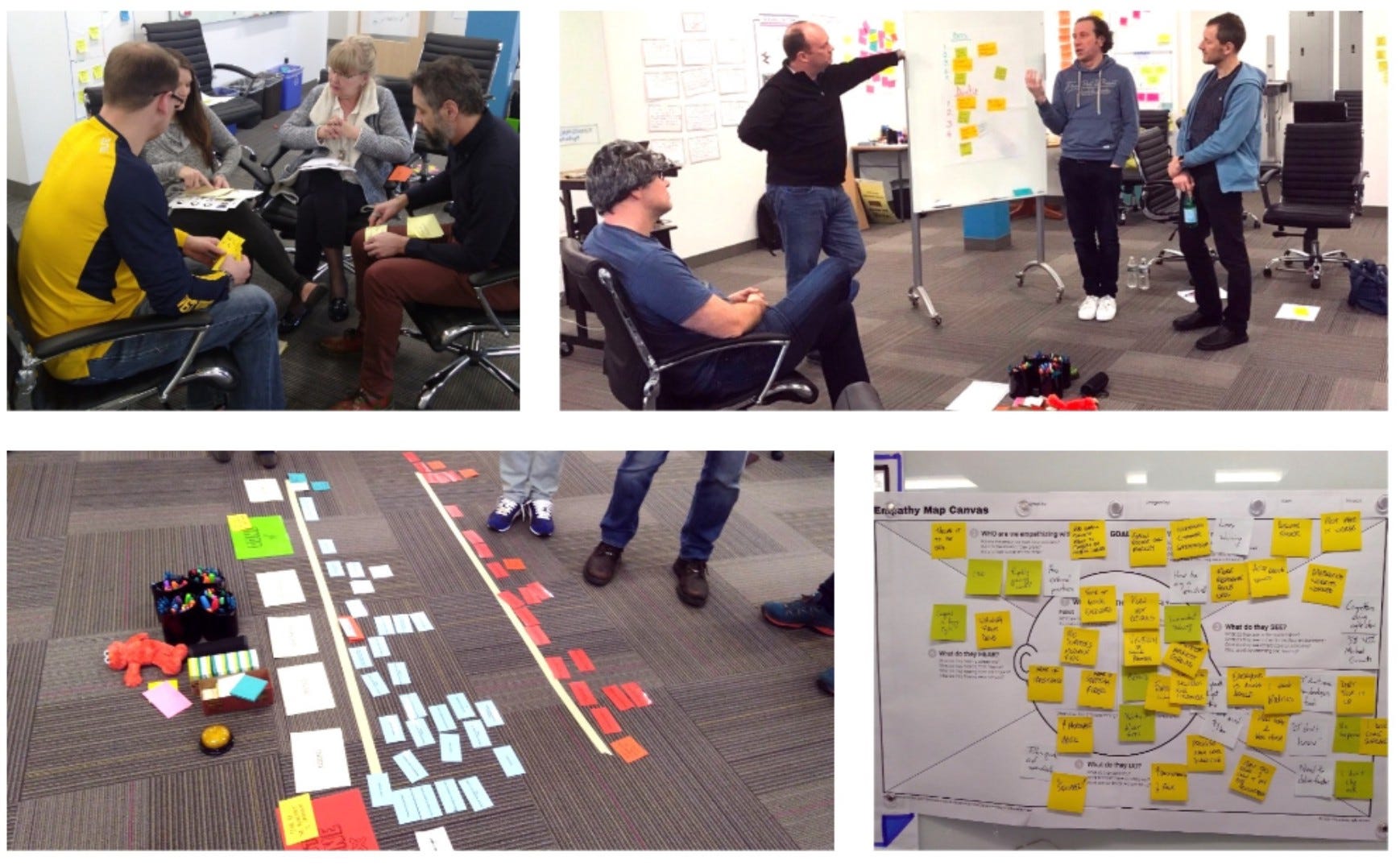
Teaching the class at Scrum.org HQ in Boston (which included CEO Dave West with a wig :)
Scrum Master Learning Journey
Slowly my focused shifted from being a Scrum Master myself to growing a community of Scrum Masters. Scrum Masters make a bigger impact when they work together with Scrum Masters from inside and outside their organization. Working together, Scrum Masters have the creativity, intelligence, and wisdom to overcome the many hard challenges that they face in helping organizations work effectively with Scrum.
Recognizing this challenge, we started the public Scrum Master Learning Journey where Scrum Masters can learn and grow together with Scrum Masters from many other organizations. Nowadays, this has become my primary focus:
“Growing a community of Scrum Masters focused on learning & sharing experiences and finding novel solutions to persistent challenges.”
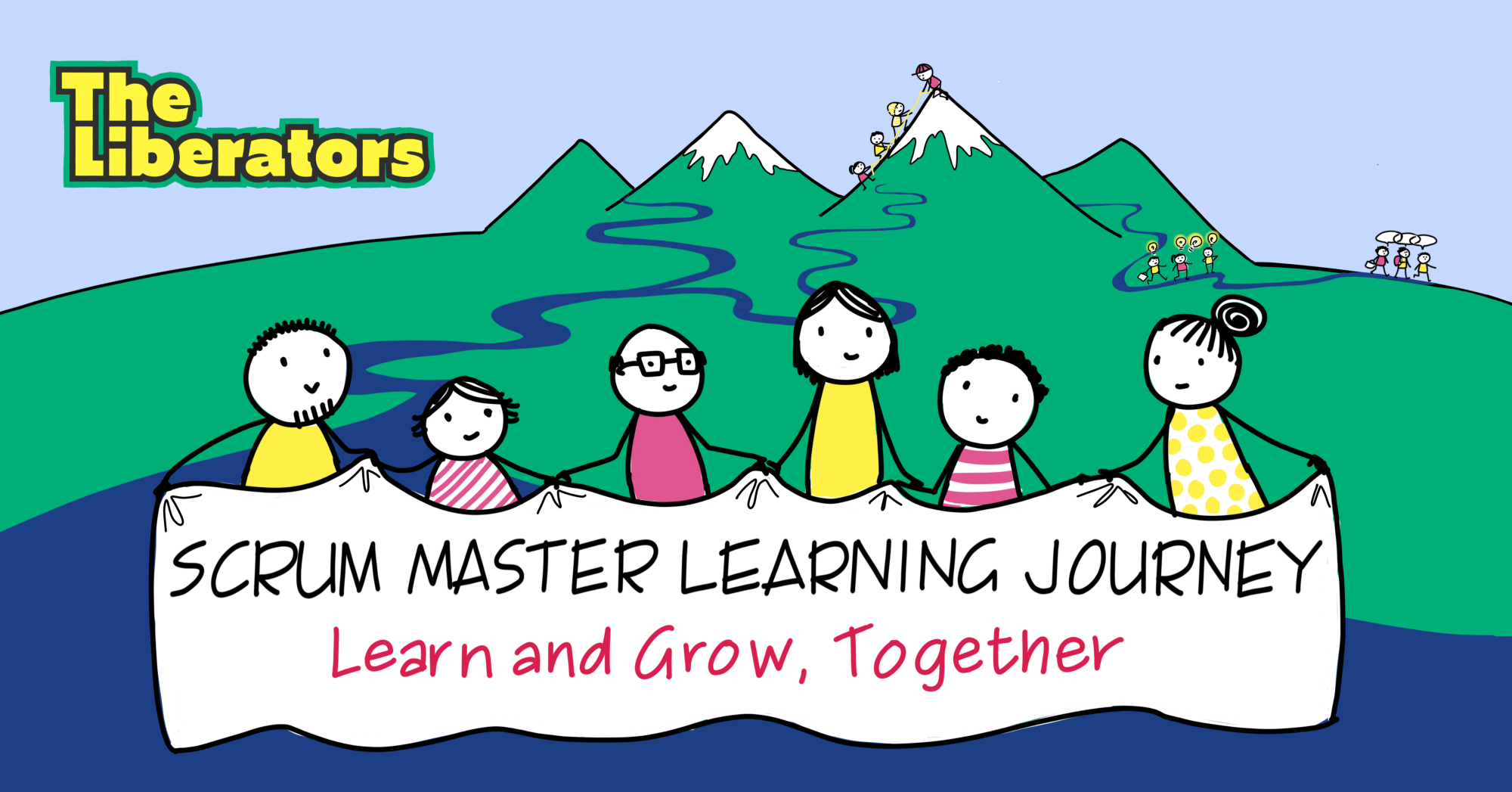
Part 2— Recommendations for new Scrum Masters
If you are still reading this article: wow! I hope you enjoyed it and feel energized to continue reading part II as well. If you scrolled down immediately to this part: welcome!
Part I contained an overview of my journey becoming a Scrum Master, Scrum.org trainer & steward, and facilitator of the Scrum Master Learning Journey. In part II, I will share what helped me the most in this journey. Although this isn’t a guarantee that it will help you as well, it might offer inspiration, ideas, and insights.
What was helpful for me in my Scrum Master journey is…
- Actively participate in the Scrum community. Quickly after I had decided to become a Scrum Master, I started attending several Scrum meetups. Some of them were organized by companies like Prowareness and Xebia, others were public meetups part of a local user group. By attending these meetups I expanded my network with like-minded people and had the opportunity to give and get help.
- Be brave! Being a Scrum Master requires courage. Courage to change the status quo. You should be prepared to take a bullet in order to have the organization achieve the greater cause. A cause they might not be fully aware of at that moment. I’ve been “fired” as a Scrum Master a couple of times. But by doing so, I set something in motion that eventually created a better organization.
- Speak at seminars. You don’t have to be an expert to speak at a seminar. Personally, I strongly dislike “expert-talks”. Often, they feel fake. Too perfect. I rather prefer stories from the trenches in which a Scrum Master shares his/her experiences. An advantage of giving a commitment to a presentation is that it encourages you to research the topic in depth.
- Learning by sharing. When I started as a Scrum Master, I used to write my lessons learned in a hardcopy logbook. I kept it for myself and never shared anything. One day, someone read parts of it and considered it tremendously useful. Therefore, I started writing my lessons learned as public blog posts. Nowadays, I share basically everything that I consider useful with the community. Successes and failures. Not sharing your lessons learned is something I even consider selfish. It prevents others to learn from you. How you decide to share your insights if of course completely up to you. It doesn’t have to be a blog post.
“Not sharing your lessons learned is something I even consider selfish. It prevents others to learn from you.”
- Continuously inspect & adapt. For years, I have the habit of doing a personal Retrospective every Sunday evening. I reflect on the past week, the upcoming week, and my progress as a whole. The most important part is doing something with your insights. You should prevent it to become “inspect & ignore” and only complain about the problems you have.
- Leave your comfort zone. Think big. I (dis)like having a big audacious goal. I don’t like those goals, because they require me to leave my comfort zone and require hard work to achieve them. I do like those goals because they allowed me to achieve results I considered impossible. Whenever I notice a pattern of comfort, I start searching for new seemingly impossible goals. To me, this approach is tiring yet fulfilling.
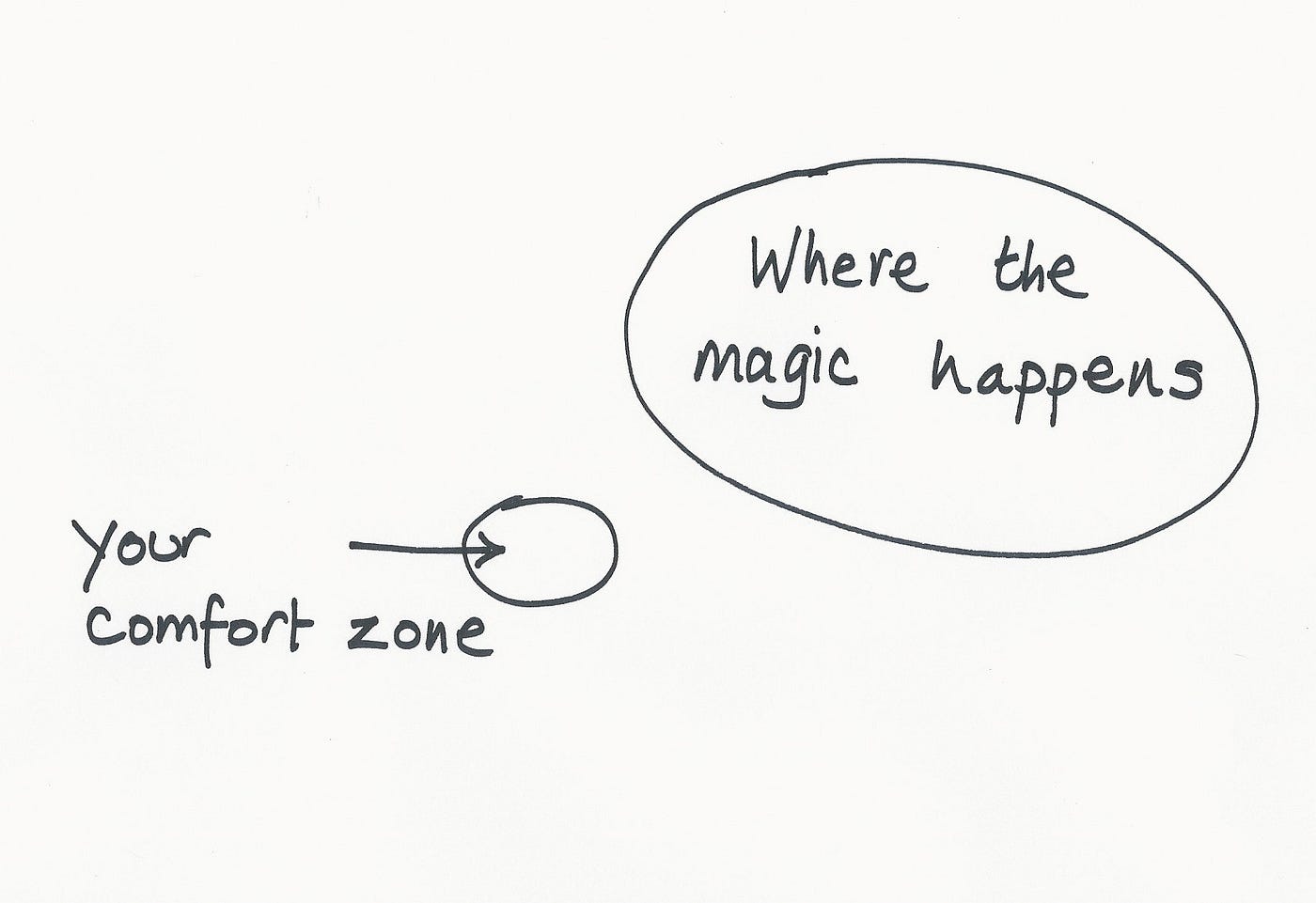
- Encourage experimentation. As a Scrum Master, it’s your responsibility to help the organization succeed with Scrum. This often requires a change in the current organizational structure & culture. Changing an organization can be overwhelming. Therefore, I like to approach by encouraging small experiments. Experiments run by the people doing the work. Why don’t we try to form a real cross-functional team (maybe this not really a small experiment)? Why don’t we try swarming for one Sprint? Why don’t we give Pair Programming a try?
- Determine your own journey as a Scrum Master. Don’t let others create it. As Terence McKenna put it “If you don’t have a plan, you become part of somebody else’s plan.” I’ve always been aware of the responsibility I have for my own career. The goals I wanted to achieve as a Scrum Master, exceeded the organizations I worked for. I’ve always been open about it. This gave the organization the opportunity to search for mutual benefits or move in different directions.
“If you don’t have a plan, you become part of somebody else’s plan.” — Terence McKenna
- Don’t do any assumptions. Don’t assume the Scrum Team has good knowledge of Scrum. Don’t assume the organizations truly understands the impact of working with Scrum. Don’t assume the Product Owner has the necessary mandate. Too often I’ve made these assumptions and it turned out completely different. Always validate these assumptions as soon as possible. Preferably even before you start as a Scrum Master.
- Start teaching. Teaching is the best way to learn something yourself. You should only ensure that you’re not the only person in the room that’s learning something… Whenever I started teaching a new topic, I would spend weeks doing research. I wanted to ensure I really mastered the topic, only to discover my lack of knowledge the first time I explained it.
- Use outcome/value focused metrics. This is something I often neglected and got me into trouble. Whenever you start with a new Scrum Team, define success criteria together with the Development Team, Product Owner and stakeholders. Think of goals focused on delivering value to customers sooner by releasing early & often, decreasing cycle time and lead time, improving team morale, lowering the number of defects, optimizing return on investment and increasing innovation rate.
- Don’t focus only on Scrum. I strongly recommend Scrum Masters to gain knowledge from other domains, frameworks, and methods as well. For example XP, Kanban and DevOps. But also areas like coaching, facilitation, and change management.
- Get certified. I’ve always enjoyed the journey of trying to achieve certification. Especially when my effort was rewarded with a certificate. In the process of becoming a Professional Scrum Trainer, I probably read every book about Scrum. I watched videos about Scrum. Read lots of articles. I visited seminars and talked with people I considered “Scrum-wise”. Most importantly, I continuously reflected on the differences between how I used Scrum versus the theoretical version.
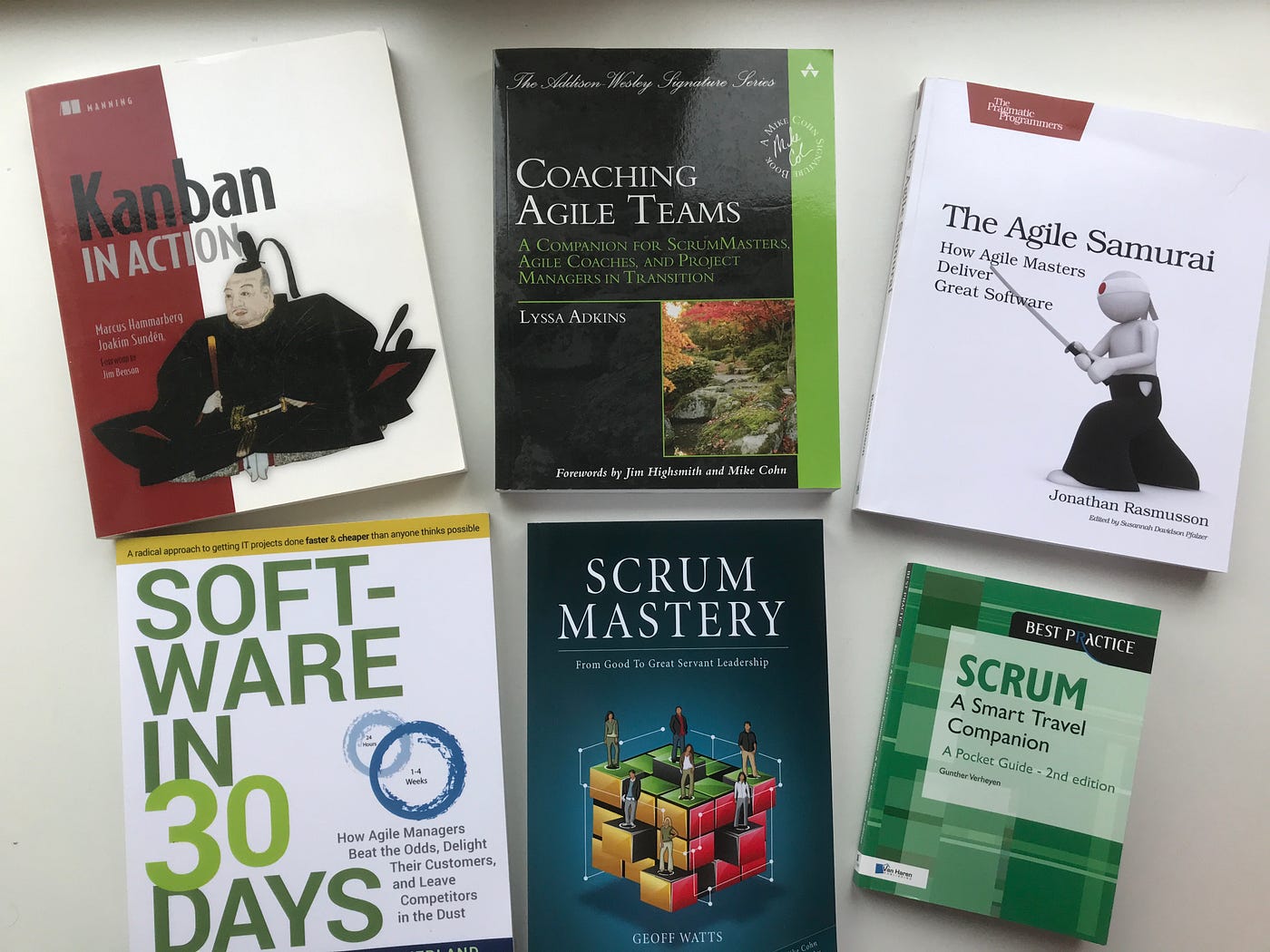
A small part of my 100+ book collection about Scrum, Agile, Facilitation etc
- Visit Scrum Masters at other organizations. I’ve always enjoyed visiting other organizations to learn how they apply Scrum. It prevents you from getting stuck in changing your own environment into an organization where Scrum can be used successfully. Besides visiting other Scrum Masters, also organize meetups within your own organization. Create transparency about your way of working and ask for feedback.
- Say “no” to impossible assignments. In retrospect, I should have rejected some Scrum Master assignments. Often, because the organization wasn’t really willing to use Scrum. They didn’t understand the implications. When they did, they weren’t willing to make any meaningful change at all. I don’t believe in pushing change. An organization or team should choose it themselves because they think it can be useful.
- Study the Scrum Guide. Don’t read it once, make studying it a habit. This might sound obvious, but the answer to many questions Scrum Masters ask can be found in the Scrum Guide. For years I used to have a copy of the Scrum Guide in my bag. Time spent with commuting was used for reading the guide and reflecting on what happened at work being a Scrum Master.
“You can’t do Scrum if you haven’t read the instruction manual.” — Allen Holub
- It’s not about Scrum. Interestingly, the more I got involved at Scrum.org, the less I was actually talking about Scrum. I would have expected the Scrum Guide was continuously discussed on a detailed level. However, most conversations I have nowadays are focused on a different level. What is the purpose the organization want to achieve? What is the real problem they want to solve? How can they best deal with complexity? Sometimes Scrum is helpful. Sometimes it isn’t. Often an empirical way of working is the answer. Let’s build bridges to other complementary approaches as well, like Kanban and XP. Let’s learn together and grow, together!
Closing
In this article, I’ve described my personal journey in becoming a Scrum Master and included recommendations for new Scrum Masters. I hope you consider it useful and that it offered inspiration for your Scrum Master journey as well. I’m always interested in learning from you. So feel free to share any experiments, insights or ideas you have. Let’s learn and grow, together!
Interested in learning more about the Scrum.org PSM & PSM II class or Scrum Master Learning Journey? Check out our agenda for upcoming events. Or join The Liberators Network, a network to support you in your professional journey towards Scrum mastery.

See how you can support us at patreon.com/liberators
